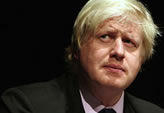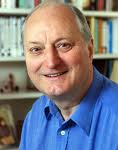Assembly Member Welcomes Boris' Air Quality 'Game Changer'
After Mayor announces plans for Ultra Low Emission Zone
The Mayor of London has announced his intention to create the world’s first Ultra Low Emission Zone in central London, in a move that he believes will deliver dramatic benefits in air quality and provide a major spur for the further development and mass take-up of zero and low emission vehicles. He has asked Transport for London to prepare plans to look at introducing a scheme that would aim to ensure all vehicles driving in the centre of the capital during working hours would be zero or low emission, and the feasibility of introducing such a scheme from 2020.
In a speech at City Hall today (13 February) the Mayor also announced that his team will deliver double the benefits forecast to be achieved through phase five of the Low Emission Zone, but in a way that will save around £350m of costs for businesses using vehicles that would have been affected by phase five. Plus he confirmed that a further £20m will be spent on a scheme that helps London’s boroughs to tackle local air quality hotspots.
 The Mayor of London, Boris Johnson, said: “Creating the world’s first big city ultra low emission zone has the potential to be a game changing moment in the quality of life of our great capital. My vision is a central zone where almost all the vehicles running during working hours are either zero or low emission. This would deliver incredible benefits in air quality and stimulate the delivery and mass use of low emission technology.”
The Mayor of London, Boris Johnson, said: “Creating the world’s first big city ultra low emission zone has the potential to be a game changing moment in the quality of life of our great capital. My vision is a central zone where almost all the vehicles running during working hours are either zero or low emission. This would deliver incredible benefits in air quality and stimulate the delivery and mass use of low emission technology.”
 Local Assembly Member Richard Tracey (pictured right) welcomed the announcement saying: “This is very good news going forward – and the Mayor has specifically mentioned Putney High Street and the excellent research and measurement by Wandsworth Council in his presentation”
Local Assembly Member Richard Tracey (pictured right) welcomed the announcement saying: “This is very good news going forward – and the Mayor has specifically mentioned Putney High Street and the excellent research and measurement by Wandsworth Council in his presentation”
Transport for London will begin work on preparing options for a public consultation on an ultra low emission zone. The Mayor believes that the substantial investment being made in reducing emissions from transport infrastructure means that by 2020 almost all the vehicles running in central London during working hours could be zero or low emission.
By that time all central London buses will be hybrid, zero emission taxis will be plying London’s streets, low emission options for freight will be available and electric cars have the potential to be in far greater use. However the Mayor recognises that more work is required and believes his proposal will act as a challenge for vehicle manufacturers to ensure more affordable and low emission technologies are in place.
Phase five of the capital’s Low Emission Zone is due to be introduced in 2015 and the Mayor has confirmed it will now only apply to Transport for London’s fleet of buses. By limiting phase 5 of the Low Emission Zone to the TfL bus fleet the Mayor expects to save around £350m in costs for businesses using vehicles that would have been affected by the changes. In today’s speech the Mayor explained how he believes a range of alternative measures can deliver around 200 per cent of the benefits forecast by the original proposal for phase 5 of the Low Emission Zone.
A key reason for proposing changes to phase five of the Low Emission Zone is that it has emerged that Euro vehicle standards have not actually reduced NOx emissions for vehicles operating in urban environments to the level that was forecast. NO2 levels would therefore not have been reduced as planned under the original proposals for phase five.
The vast majority of emissions reductions through phase five would have been made through the TfL bus fleet. So the Mayor has proposed a package of measures that will still focus on the bus fleet, but that will save London’s economy £350m by not including all HGVs, buses and coaches as had originally been planned.
| The Mayor’s new package of measures includes: • Extra hybrid buses – earlier this year the Mayor committed to deliver 600 new Bus for London vehicles, which alongside a new commitment to deliver another 600 conventional hybrid buses over the next three years would increase the number of hybrid buses in the capital to over 1,600 by 2016. • New Euro Standard 6 buses – the Mayor now proposes an £18m programme to retire the last 900 Euro 3 standard buses in London so that all of TfL’s bus fleet will be of Euro 4 Standard or better for NOx emissions by the end of 2015. • Measures to clean up construction sites – these sites are responsible for around 12 per cent of London’s NOx emissions and to tackle that the Mayor will introduce a new Low Emission Zone for construction machinery. The standards will be agreed with the construction industry and will be consulted on as part of new Supplementary Planning Guidance. The Mayor will also work with the Environment Agency to rollout the use of dust suppressants at industrial sites. At Horn Lane these reduced concentrations of PM10 emissions by up to 59 per cent. • A new zero emission taxi – the Mayor has asked his team to explore the potential of taxi designs that offer no emissions at the point of use. Ecotive Limited have already designed a unique and purpose-built new Metrocab taxi for London with zero emission capabilities, which is exactly the type of vehicle the Mayor would be delighted to see manufactured in the capital and entering the market. • More energy efficiency measures – will be encouraged in homes, schools and public buildings. |
Today the Mayor also outlined how his Mayor’s Air Quality Fund will help boroughs target new spending on local air pollution hotspots. He has created a £20m fund to be spent over the next decade, with the first £2m available for boroughs this year. All London boroughs and local businesses in partnership with the boroughs will be eligible to bid for the funding to develop innovative schemes to address air quality in localised areas.
The Mayor of London’s Environment Advisor, Matthew Pencharz, said:
“The Mayor has put together a team that takes air quality seriously and that is why he has confirmed another £20m will be devoted to improving local air quality. He has also brought forward a package of measures that will deliver double the emissions savings originally forecast for phase five of the Low Emission Zone, whilst saving businesses already battling through a tough economic climate from a £350m bill.”
Addressing an audience of borough leaders and environmental experts today the Mayor was due to express his belief that improving air quality in the capital is a shared challenge; and his confidence that his audience would be brimming with the innovative ideas that could tackle local air quality hotspots and potentially be funded by the Air Quality Fund.
February 15, 2013
Related links
|